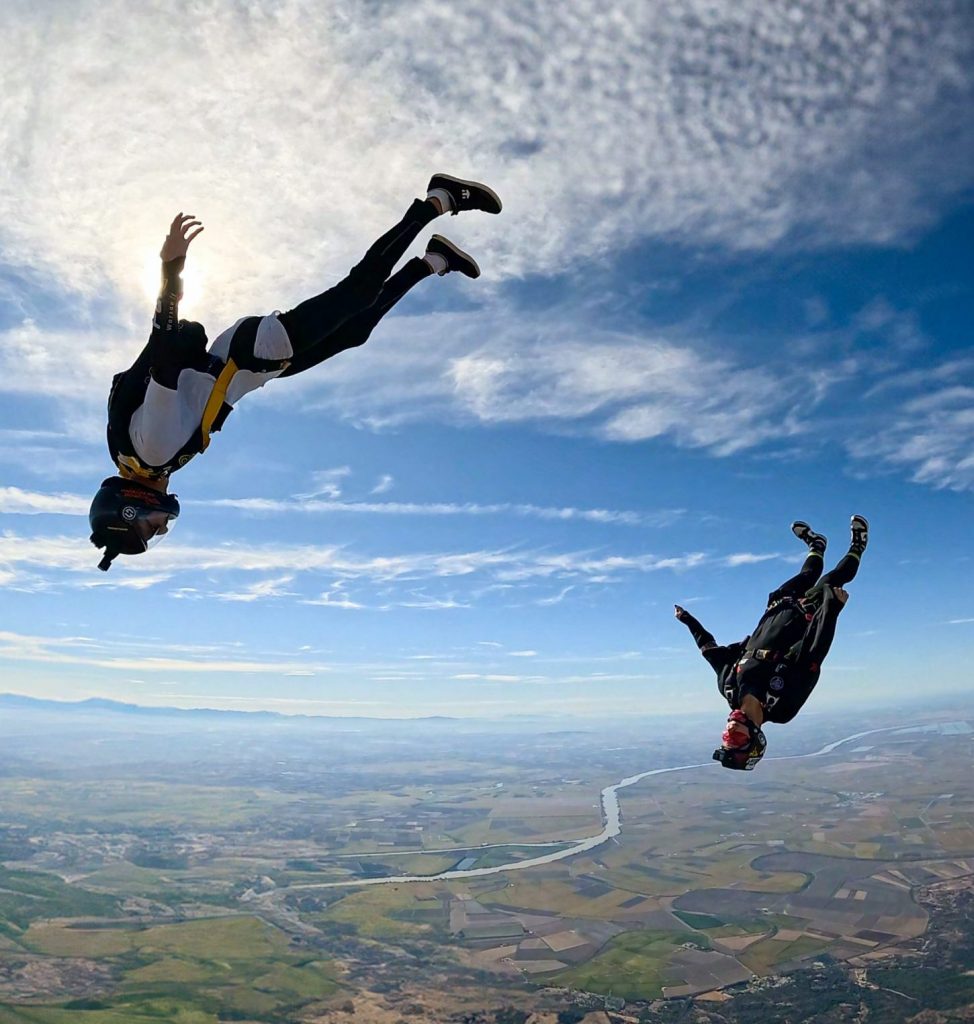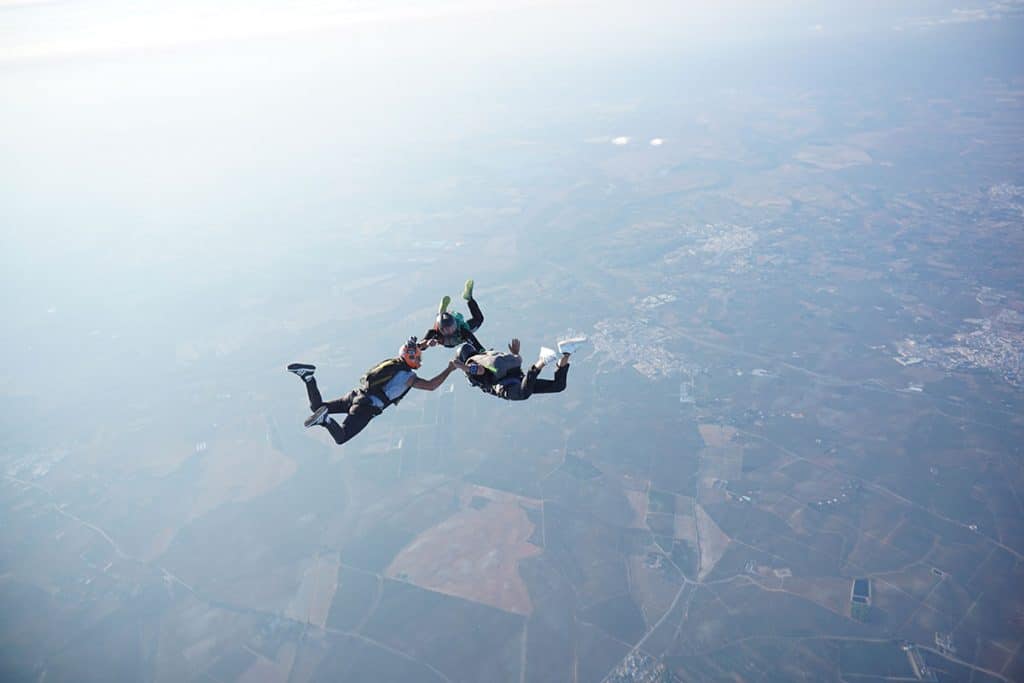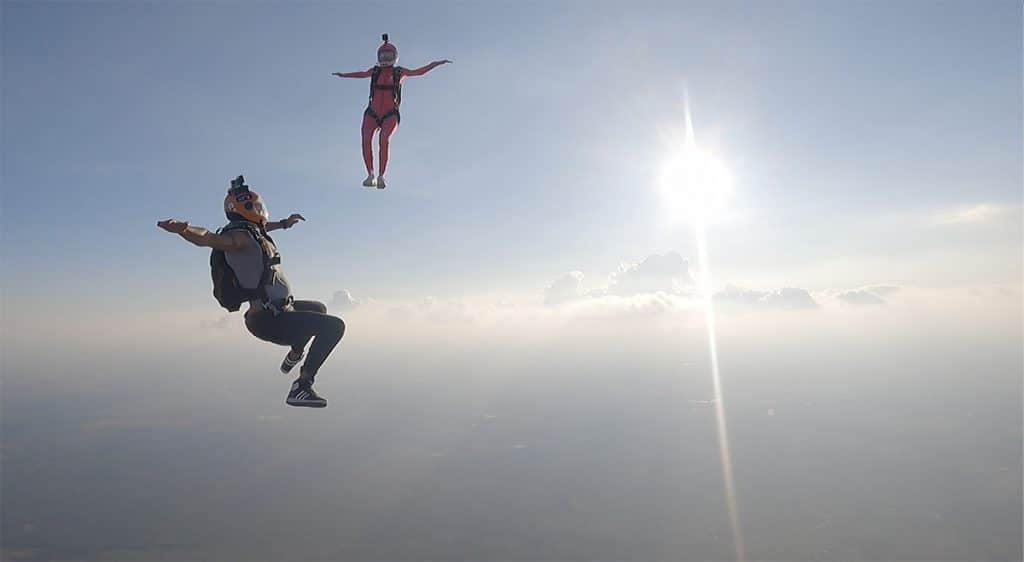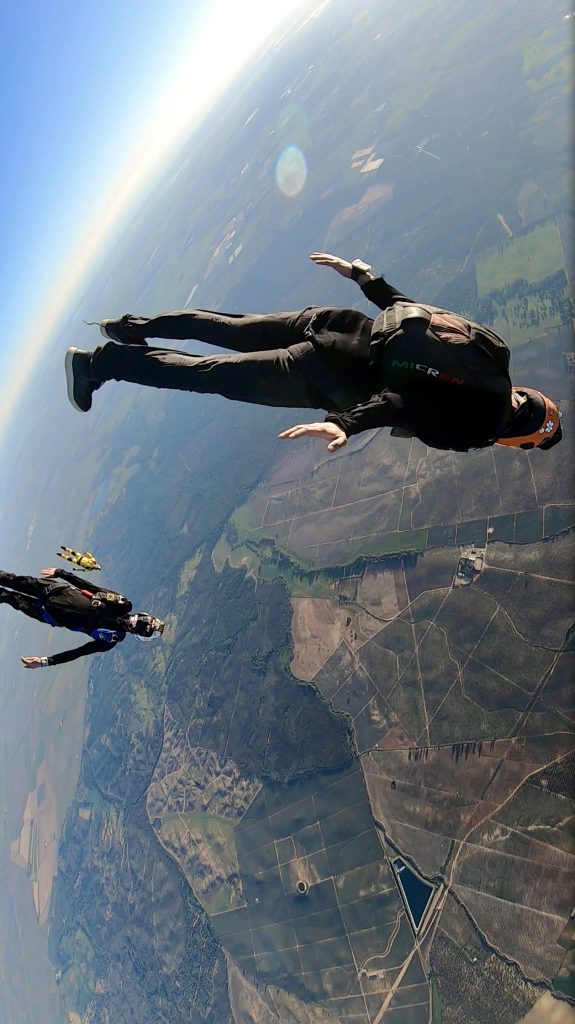Progression: Learn to fly your own body
SkyFlowers offers training in all disciplines, from a belly position to head-down.
It is important to understand that, like any other sport, it requires consistent and prolonged training to be able to notice results.
Don’t try to take shortcuts, but rather enjoy the learning process accompanied by our excellent instructors!
SkyFlowers team is available to provide training for beginners/intermediates/advanced and to offer training, either individual (1:1) or as a group, in all flying disciplines.


FS: In formation skydiving (FS) two or more parachutists come together in freefall, performing a series of grips and points.
Our FS training consists of individual or small group training that focuses on developing formation freefall skills that will give you a solid foundation to grow in your skydiving career more safely.
FREE FLY:
After you have acquired a solid belly flight, you can begin to learn to fly in other orientations/positions. It is important to have a good understanding of safety and basic skills to be able to learn more advanced manoeuvres or move on to the next position.
The learning process usually starts with a back-fly orientation, moving to a vertical sitting (sit) or standing (head-up) position and then head-down (head-down).
As your skills improve, you will be able to fly and play with all the different angles and positions between head-up and head-down.
The training is based on the standards set by the USPA and is compatible with any other certification.


TRACKING: Tracking is defined as a way of flying in which you not only have a vertical movement but also a more horizontal one that allows you to cover greater distances and acquire greater speed.
The learning process usually starts with a flat angle and, as you become more familiar with it, you start flying at different angles until you almost reach verticality. In addition, the progression will start with a belly-up orientation, then move on to a back-down orientation, and finally with feet first.
For those new to any of these disciplines, we recommend personalised training (1:1) to ensure the development of basic flying skills and the acquisition of the necessary knowledge to jump in a group:
- flight path planning.
- exit order from the aircraft.
- flying within a formation.
- separation procedures.
- skills and procedures to land outside the designated area (tracking).
*The use of an audible is mandatory.
If you already know the basics or have a more advanced level, you can opt either for individual (1:1) or a group training.
All the training offered is based on the standards set by the USPA and is compatible with any other certification.
